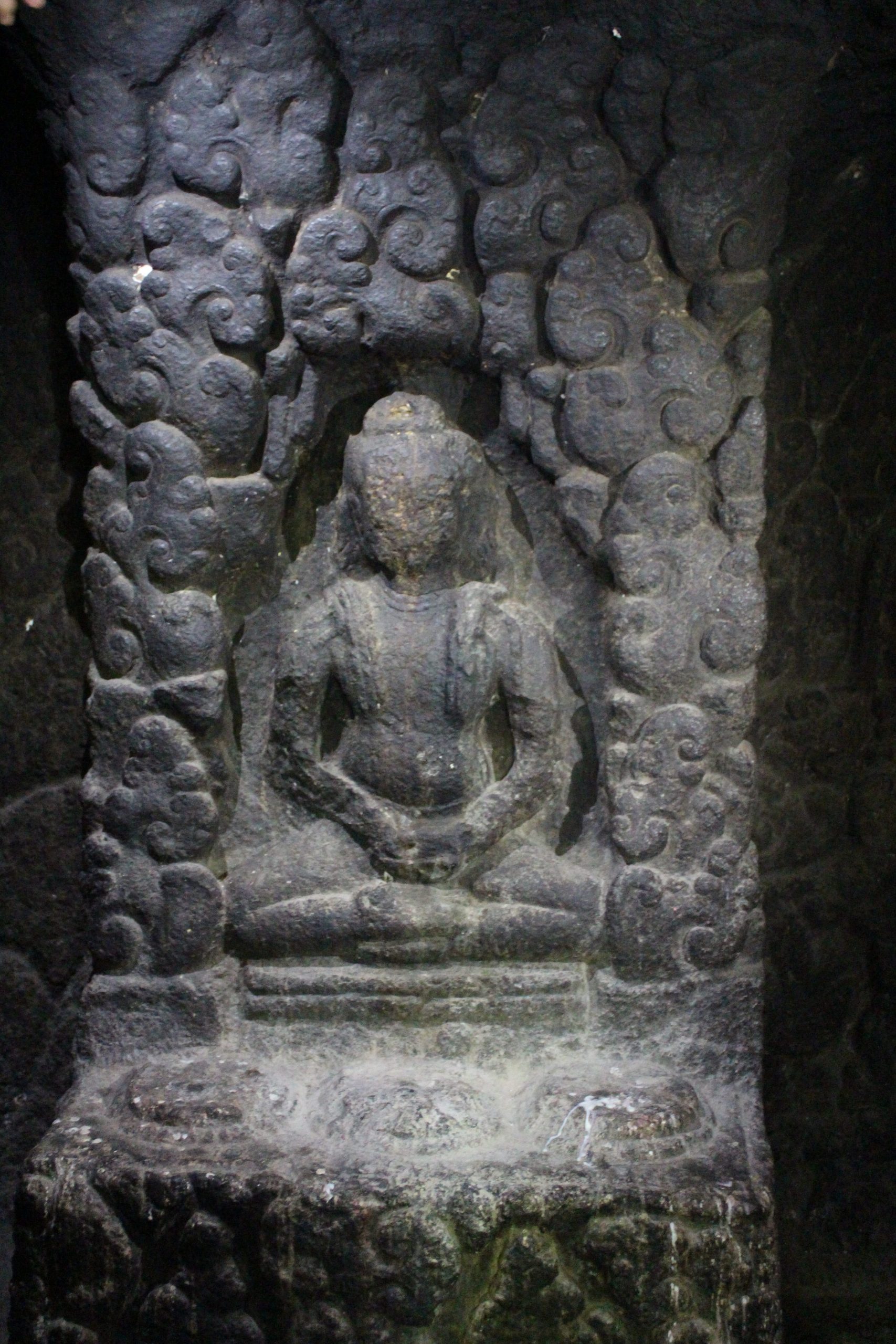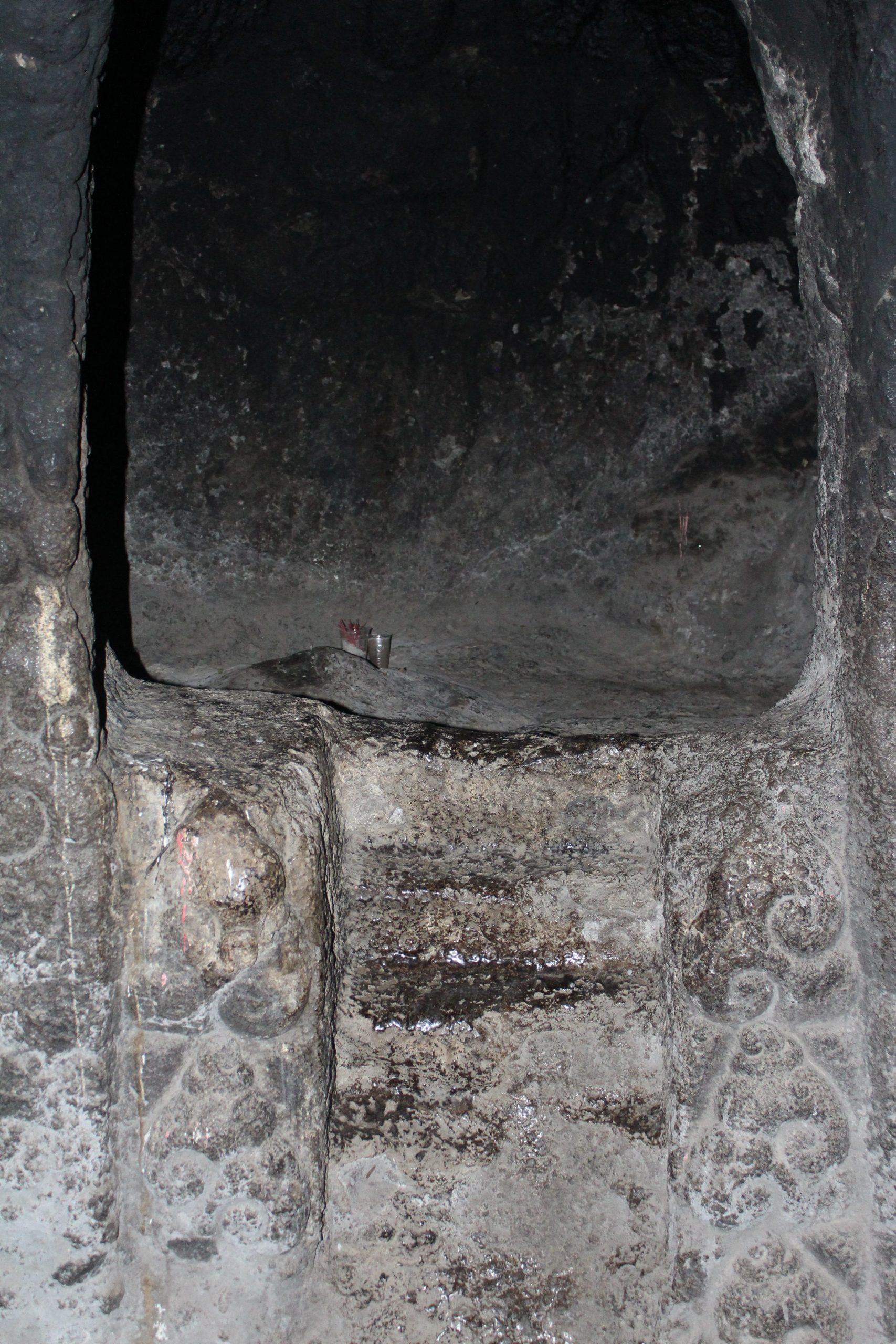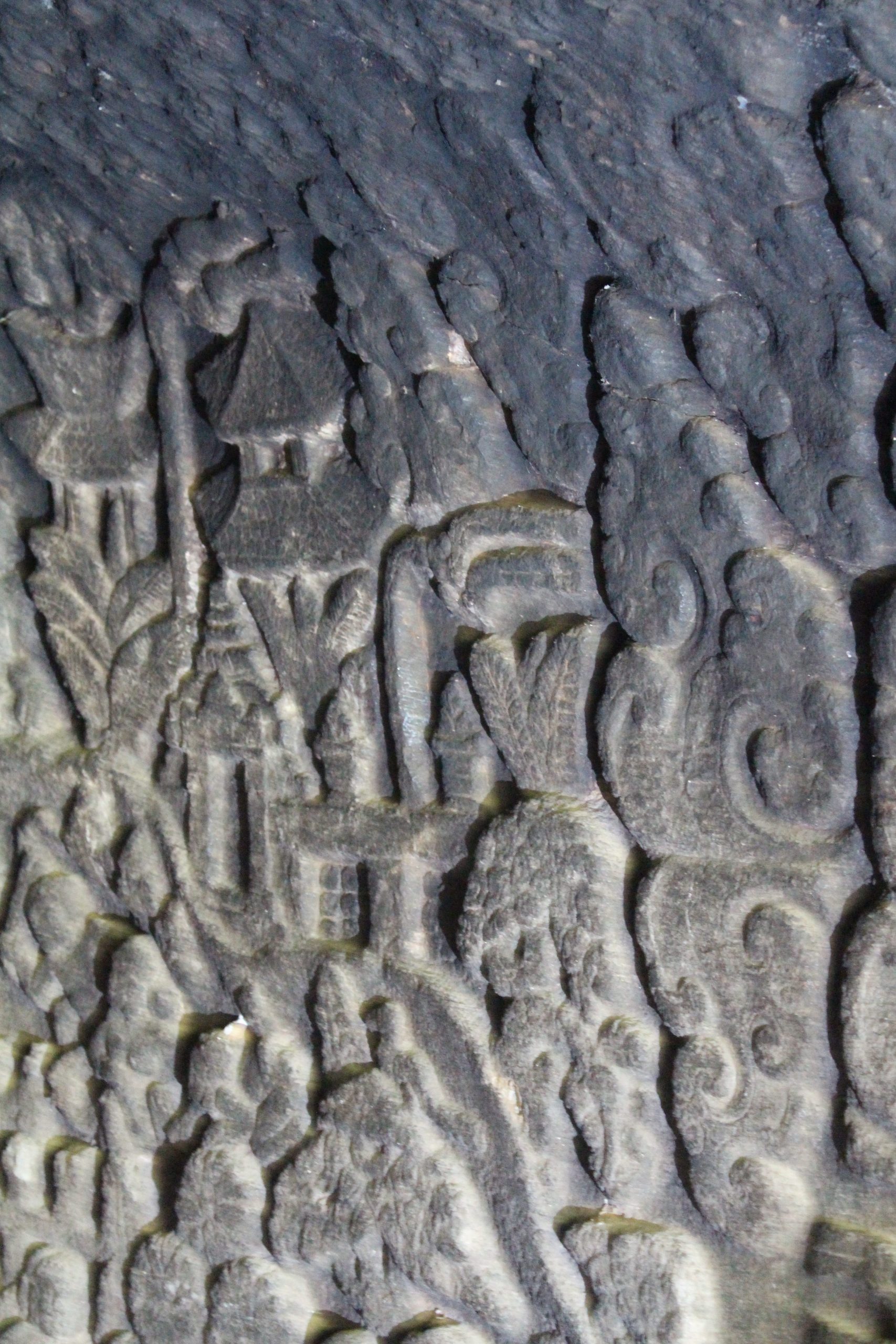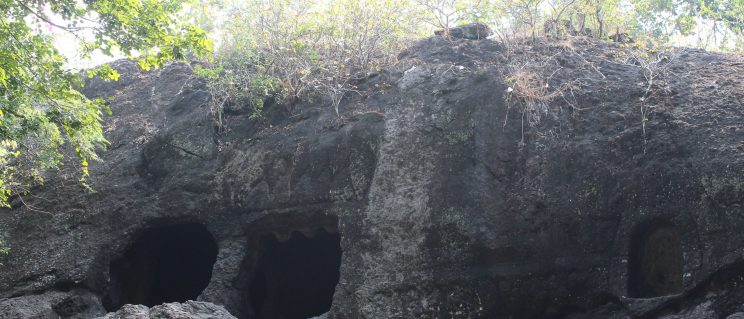Indonesia, East Java, ca. 11th century, Andesite
Nestled between Gunung Ngliman and the village of Pojok, a rocky outcropping rises toward two deep apertures. Known as Gua Selomangleng, this was a place well suited for ascetic practice—close to nature, yet not too far from the support of urban life.

On the back wall of the main chamber, a seated ascetic is carved in deep relief. Smoke-like volutes surround him, as if generated by the power of his internal fiery heat (tapas).

Local legends infuse the Kediri area with a palpable sense of history. Kediri was the capital of the eleventh-century king Airlangga, who greatly supported religious communities and artistic production in East Java. He was renowned for his own spiritual achievements, having practiced austerities before establishing his kingdom. Imagery associated with asceticism, such as hermits, nagas (serpent deities), and garudas (divine eagles) appear throughout Airlangga era imagery.

Gua Selomangleng is said to be the hermitage of Airlangga’s princess, Sanggramawijaya, who was a devoted Buddhist. Whether royally patronized or not, the caves’ layout is conducive to meditation. Stairs hewn from the living rock ascend to solitary chambers. A massive face of kala, the demon of time, hovers over the doorway between sections of the cave.

Among the reliefs that cover every surface of the cave’s interior, images of local life can be found. Houses, rivers, and trees preserve Kediri’s former appearance.



